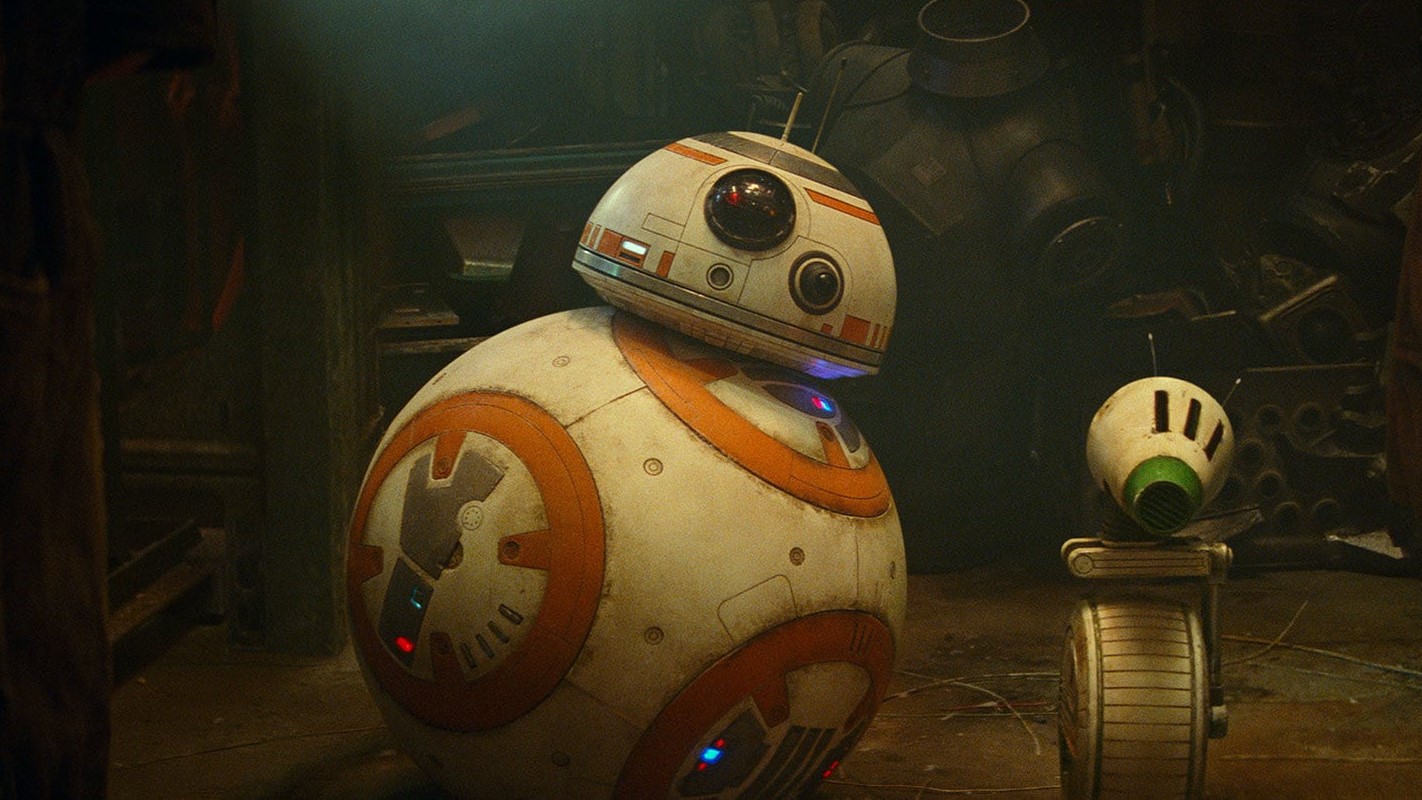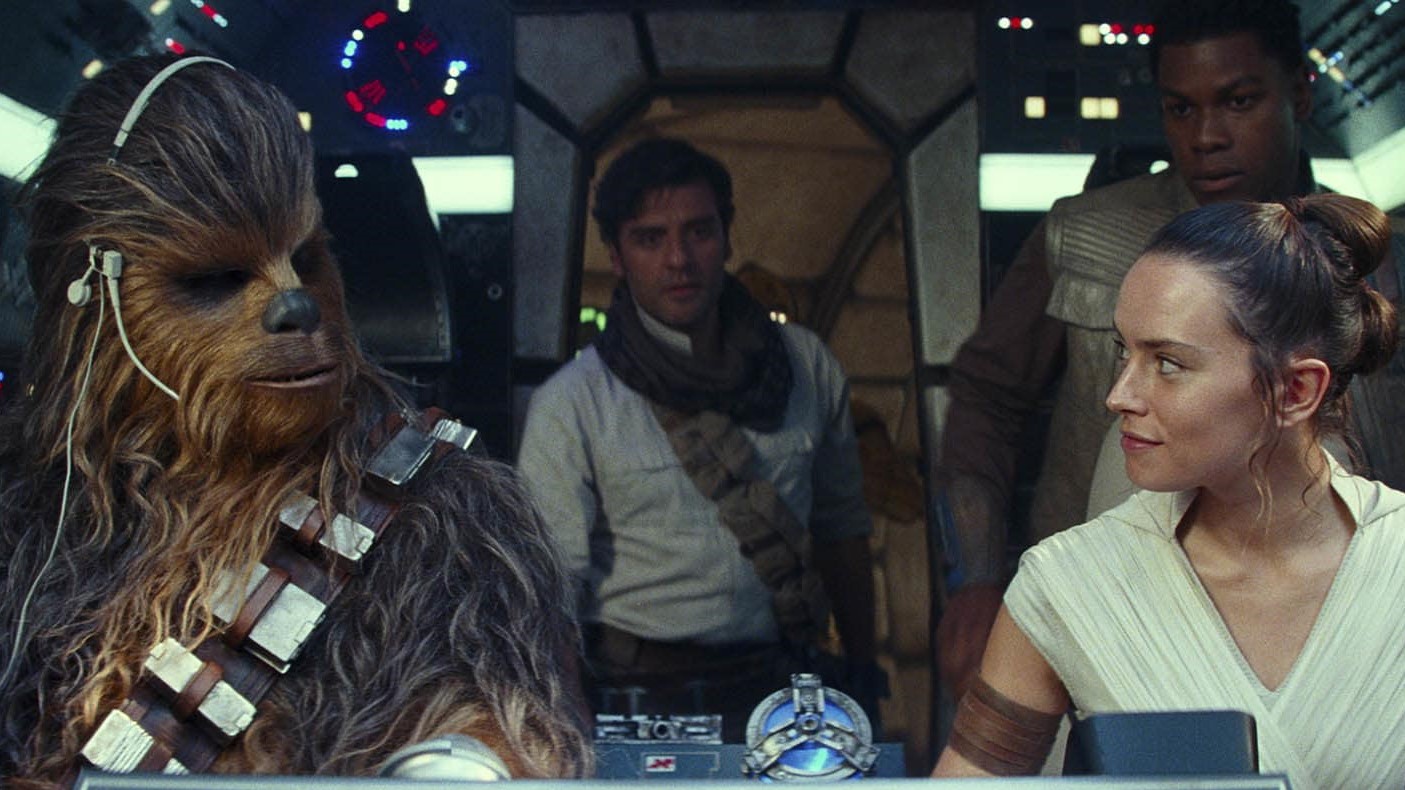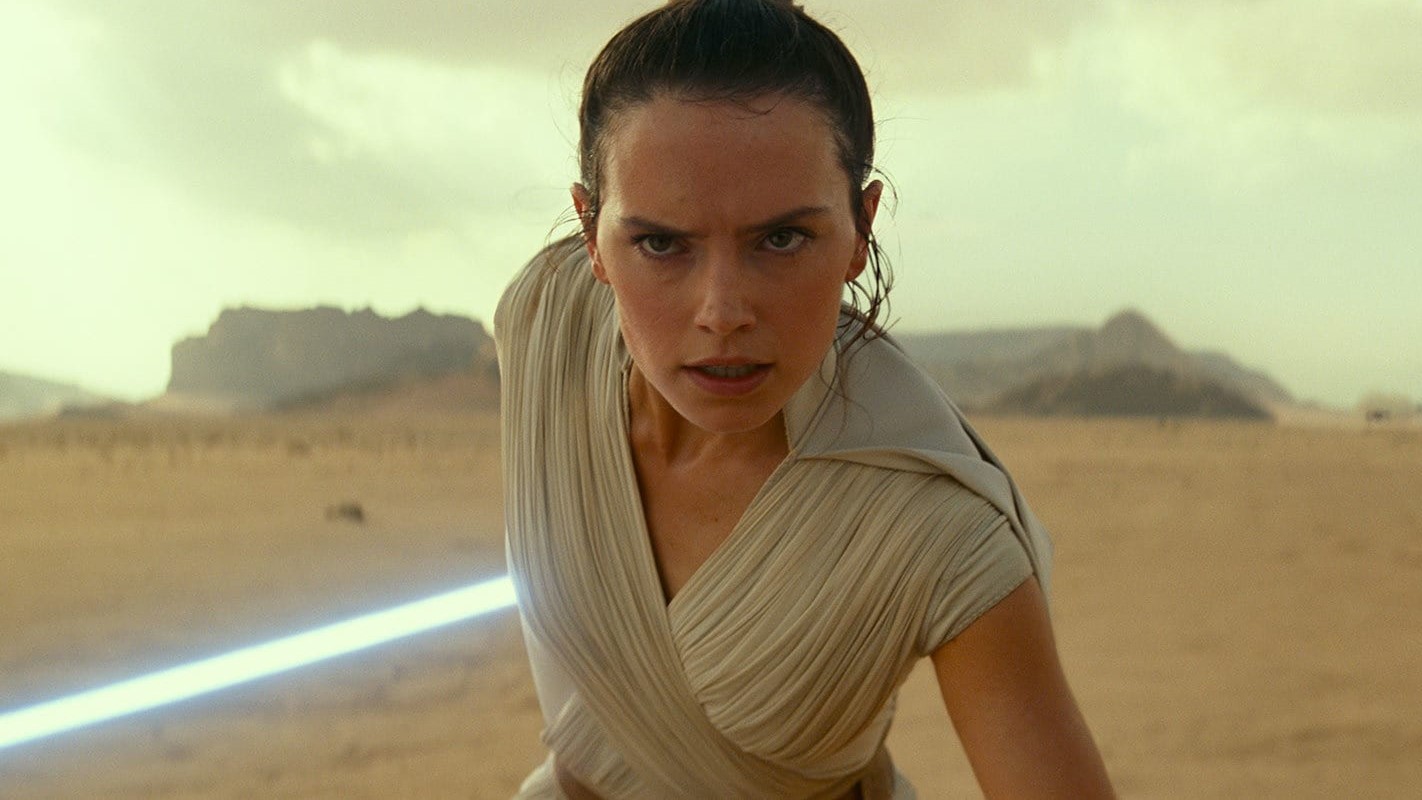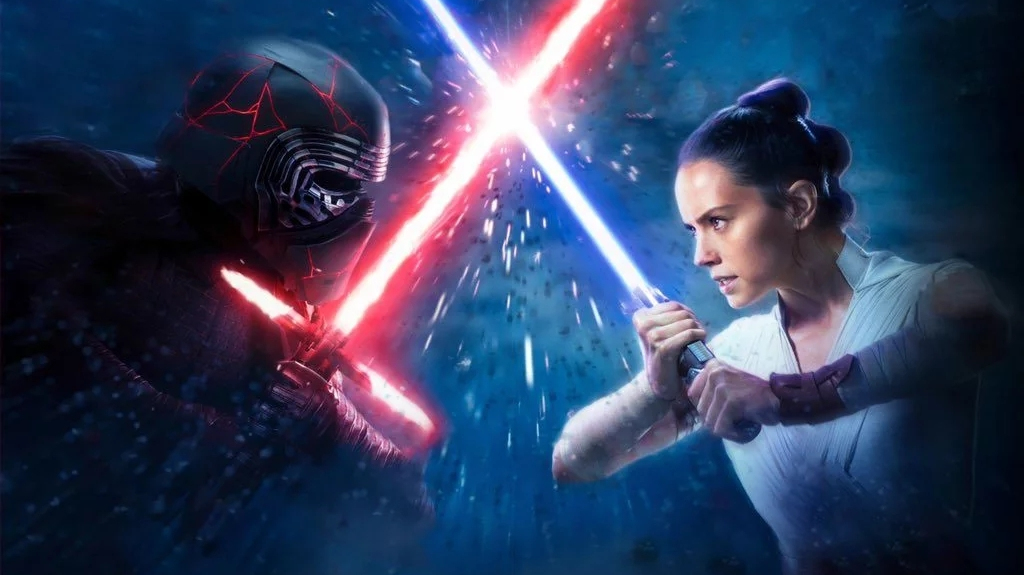TechRadar Verdict
Given the unenviable task of wrapping up forty years of Star Wars theatrical releases, Episode 9 succeeds on a number of levels - especially in the way it both embraces and subverts Star Wars lore. Characters who felt strange and unfamiliar a few years ago now have satisfying story arcs that expand the Star Wars universe in ways that were hard to predict at the outset. Purists will say that the movie bends and breaks fundamental rules of the SWU, but the film’s reasoning for doing so is understandable and, frankly, commendable in its own way.
Pros
- +
Subverts Star Wars dogma
- +
Embraces nostalgia
- +
Stakes are quickly and firmly established
Cons
- -
D-O is the Forky of Star Wars
- -
Nearly non-stop crescendo
- -
More CGI faces
Why you can trust TechRadar
Some mild spoilers for Star Wars: The Rise of Skywalker follow.
In retrospect, Star Wars Episode VII - director JJ Abrams’ first venture into the Star Wars universe - played it too safe. From the opening crawl all the way to the destruction of Starkiller Base, it felt like the audience was watching a high-budget successor to A New Hope. The similarities between the films could be seen everywhere, and they became almost too hard to ignore by the time the cantina scene rolled around.
Thankfully, Episode IX, Abrams’ final installment in the Star Wars franchise, is a different breed. It celebrates series lore - both Episode VI from which it clearly draws inspiration in its overarching plot, and the new trilogy that Abrams helped to build - but it’s willing to subvert series dogma for something new and different.
The result is a film that includes elements of the original trilogy but importantly expounds upon them and morphs them into something new. There’s fan service, as many will surely point out, but there’s more exploration and character development here, too.
The film’s cultural significance and potential impact on the larger universe is a lot to digest in a single sitting, but taken on its own it’s one of the best new films and a fitting conclusion for the myriad characters you’ve come to know and love over the last four decades.
The legacy of the force

For fear of ruining the plot it will have to suffice to say that The Rise of Skywalker follows a similar trajectory as The Return of the Jedi - the First Order have procured a second more powerful weapon than Starkiller Base that threatens the newly established republic.
This plot line, introduced within a few minutes of the film, helps establish the stakes firmly and immediately, and puts the film’s heroes on a pressing mission that puts them at ends with Kylo Ren and the Knights of Ren who acquire a device required to reach Palpatine at the fringes of space.
Sign up for breaking news, reviews, opinion, top tech deals, and more.
Like previous Star Wars tales, the film doesn’t take the shortest path to get to the First Order’s new base - oftentimes sending heroes to one location to the next to find the one missing piece of the puzzle - but by no means does The Rise of Skywalker’s plot meander along in the way that The Last Jedi did. In fact, we’d say it has the exact opposite problem.
To reach the conclusion of the franchise’s plot, Abrams puts the audience on a forced march, shepherding us from battle to battle, one explosion to the next with limited explanation of the thoughts and feelings of the increasingly conflicted characters.
There are moments here that very easily could’ve fit in The Last Jedi had it not spent so much time on a casino planet or in an awkward, OJ Simpson-style starship chase - something fans have rightly called out about the film.
Thankfully, besides a few non-sequiturs that could be filled in with the deleted scenes, the plot of The Rise of Skywalker flows in a logical, cohesive way that ultimately feels fulfilling... if a bit rushed.
The expanding and contracting universe

The biggest driving force behind the film’s success is its willingness to introduce new situations to the wider Star Wars world while retaining the sanctity of the characters that have come before. For example, Rey and Kylo Ren are given room to explore their pasts in relation to their parents, but with the important caveat that each of them are their own person.
It’s the interplay between the Sins of Our Father trope for which the series has become known for and the characters’ newfound agency that give this entry believability and depth that were absent in the previous film. Both sets of progeny carry burdens of guilt over the actions of their families in the same way Luke did in Episode VI, but Rey and Kylo have more baggage than Luke thanks to their lineage that gives this plot line even more heft.
That semi-familiar feeling extends to other characters like Princess Leia, Emperor Palpatine and Lando Calrissian, each of whom return to the fold similar but different than before. Lando, now older than he was in Return of the Jedi, makes a number of references to the old adventures like a wistful old timer - which can come off either corny or endearing - while Palpatine has somehow become even more evil than before.
As for the series’ newer characters - Rey, Finn, Poe and Kylo Ren - The Rise of Skywalker finally makes them feel wholly realized and a vital part of the expanding universe. Once you know their entire background and origins (or in Poe and Finn’s case, a significant majority) the four main characters finally begin to carry equal weight and importance. It becomes less of a chore seeing Poe struggle with his new role in the Resistance when you learn who his love interest was and what his previous career path was, and the same goes for Finn when he finds camaraderie in other First Order defectors.
Secondary characters - C-3P0, Chewbacca, Lando, R2 and General Hux - aren’t so lucky as to get rounded out story arcs, but they’re each given a moment to shine which feel appropriate to their characters.
The only disappointing character is the new droid D-O, a deus ex machina plot device with the personality and demeanor of Forky from Toy Story 4. Another misfire comes in the eerie CGI faces of original trilogy actors, which we thought we'd seen the last of with Rogue One. Hopefully they age better than the effects in the prequels.
Let the past live

Kylo Ren famously advocated for killing the past, its teachings and its dogma, but The Rise of Skywalker isn’t quick to toss out everything from the originals for something fresh and new. Relics from the Galactic Empire are revered on both sides of the battlefield (Vader’s helmet, for example, as is Luke’s old X-wing) and serve as more than just fan service, playing key roles in the plot.
Similarly themes are recycled from the originals - characters battling human duality is as prevalent in this film as it was in both Episode III and Episode V - take new shape in the re-established Republic. If you’re willing to dig deep into them and their implications, you’ll only appreciate this final entry more.
The dark side to Abrams’ liberal borrowing of the source material is that fundamental rules (like the Sith’s Rule of Two or previously established hyperdrive limitations) need to be broken for it all to make sense. The good news is that breaking those rules allows the series to try new things in its final installment that might not have been as feasible if The Rise of Skywalker stringently stuck to the bylaws established by past films.
There was always hope that the new Star Wars trilogy would take ideas from Timothy Zahn’s Thrawn Trilogy - and while not all of the ideas are lifted from the series, a few key ideas are actually used as a plot in The Rise of Skywalker with a JJ Abrams-style twist. Those ideas are thoughtfully executed and, while not exactly the way fans have imagined them on forums, feel like they loosely fit in with George Lucas’ original plot… which is amazing for a franchise that introduced midichlorians in its prequels to explain something that didn’t need a scientific explanation.
Verdict

There will be those who dislike, disapprove or generally disavow The Rise of Skywalker on the grounds that it doesn’t do x, y or z like the original trilogy. But we’d caution you against dismissing the movie altogether - even it doesn’t do that one Star Wars thing you were expecting. We think Abrams’ final entry in the Skywalker saga is the best simply because it’s willing to tread new ground while carrying the relics of the prequels and the original trilogy on its back. It falters under its own weight at times, yes, but it tries to add to a rich, diverse universe by subverting the very expectations one might have about a place as well-established as the SWU.
The result is a film that stands on its own, as timely as ever in its message of good versus evil, expunging the sins of our fathers and the sheer grit and good nature that’s within each and every one of us. And, to be honest, that’s why we still love Star Wars.

Nick Pino is Managing Editor, TV and AV for TechRadar's sister site, Tom's Guide. Previously, he was the Senior Editor of Home Entertainment at TechRadar, covering TVs, headphones, speakers, video games, VR and streaming devices. He's also written for GamesRadar+, Official Xbox Magazine, PC Gamer and other outlets over the last decade, and he has a degree in computer science he's not using if anyone wants it.
